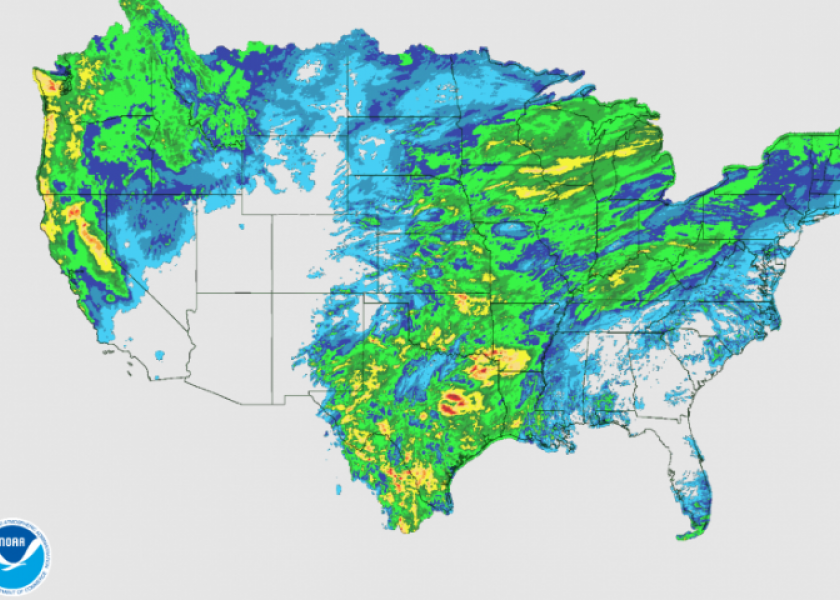How Much Will Midwest Rains Slow Spring Planting?

Almost perfect - but not quite. That's how many Midwest retailers and farmers would describe the weather so far in April. Temperatures have been amenable, but precipitation has put more than a few planting schedules on pause.
"We've had a lot of precipitation coming in through here [the Corn Belt] in April, says Eric Snodgrass, atmospheric scientist with Agrible. "It's been a blessing, and it's also been a problem. The blessing is it's really helped to erode the drought ‚... but it's also keeping a lot of folks out of fields."
According to the latest Crop Progress report, issued April 17 by the National Agricultural Statistics Service (NASS), corn planting progress is at 6%, compared to 12% a year ago and 9% for the 5-year average. Key states of note include Illinois (6% versus 13% 5-year average), Indiana (4% vs. 6%), Iowa (2% vs. 4%), Kansas (9% vs. 18%) and Missouri (17% vs. 25%).
Spring wheat is similarly behind, with 13% planted versus 21% for the 5-year average.
Meantime, crops planted further south are on schedule or even ahead of schedule. Cotton is 8% planted, compared to 7% last year and 9% for the 5-year average. Sorghum is also moving along on time, with 21% planted compared to 16% last year and a 20% 5-year average. And rice is significantly ahead of schedule - 55% planted compared to 46% last year and 37% for the 5-year average.
Several analysts, including Farm Bureau's director of market intelligence, John Newton, have been monitoring upcoming forecasts for the possibility of additional planting delays. Newton says a sluggish start in mid-April is less worrisome because the most active planting period continues through mid-May.
"In recent years, we've seen growers respond quickly to planting delays by increasing productivity later in the planting season," he notes. "For example, in 2014, corn growers dropped 56% of the corn crop in the ground during the two weeks prior to the mid-May target. In 2013, growers planted 43% of the corn crop between May 19 and May 26. Farmers will have opportunities, and have the technology, to recover from any early season slowdowns."
Even so, weather will remain a key driver of market uncertainty, Newton adds. Poor crop conditions this spring and summer will knock down production potential and prop up prices. On the other hand, a new bumper crop will further test price lows seen in recent years, he says.







